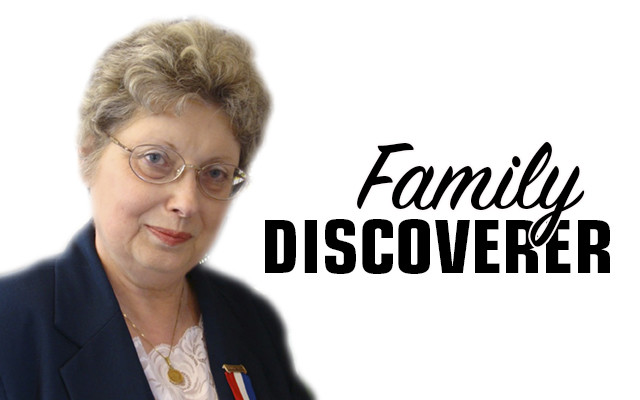
Another DNA test
By Nancy Battick
Most people are familiar with autosomal DNA. That’s the one which reveals your ethnicity. Unless you’re a dedicated researcher, you probably haven’t taken any other tests, though some may have for medical reasons. Let’s look at one of the “other” DNA tests you might consider.
Mitochondrial DNA, mtDNA for short, is not as commonly known. This is the DNA we get from our mothers. Every mother passes this DNA to all her children, just as her mother passed it to her and back through the mist of time to her earliest female ancestor. A woman’s sons have her DNA, but they can’t pass it on, only her daughters can. And this DNA is always an exact copy of her mother’s and all the grandmothers before her.
MtDNA stretches back thousands of years. My own goes back 50,000 years to a woman living in southern Europe. The test is simple, usually through an inner cheek swab. The results will identify the haplogroup your DNA falls into. Think of a haplogroup as the family your DNA belongs to — that is, those who share the same or a great deal of the DNA you do.
Using the results from the test, I viewed all the people who’ve taken the test and who share identical DNA with me.
If you recall Otzi, also called the iceman, who died somewhere around 3100 BC in the Alps, and whose mummy was unearthed in 1991, at first his DNA was in the same group as mine, but later analysis showed it’s related but isn’t the same as the modern version. Geneticists have created a separate haplogroup for him. So, I suppose Otzi is a really distant cousin to some degree.
Should you consider having your mtDNA tested? It can be useful in some instances.
MtDNA is used in forensic testing to identify relatives. Perhaps the most famous of these cases is that of Richard III, the English king killed at Bosworth whose throne was usurped by the first of the Tudors. His burial spot was never marked but was eventually discovered.
While the finders were 99 percent certain it really was Richard due to his severe scoliosis, they needed to prove it. Experts turned to mtDNA. Since none of Richard’s children survived, they began their search through collateral descendants of his sister, Anne. The genealogists tracked descendants through 16 and 17 generations to locate two, one man and one woman, whose DNA proved that the remains were indeed that of Richard III.
Results from mtDNA testing can be used to assist adoptees find their biological family. It won’t reveal exact relationships, but will identify those who are closely related in some manner through the maternal line.
One caveat: mtDNA will show relationships, but not exactly whether they’re first cousins today, cousins from a hundred years ago, or as in the case of Otzi, thousands of years ago.
I’m glad I had mine tested. It’s always good to meet another relative, even if he is a mummy.
Columnist Nancy Battick of Dover-Foxcroft has researched genealogy for over 30 years. She is past president of the Maine Genealogical Society, author of several genealogical articles and co-transcribed the Vital Records of Dover-Foxcroft. Nancy holds an MA in History from UM and lives in DF with her husband, Jack, another avid genealogist. Reader emails are welcome at nbattick@roadrunner.com.